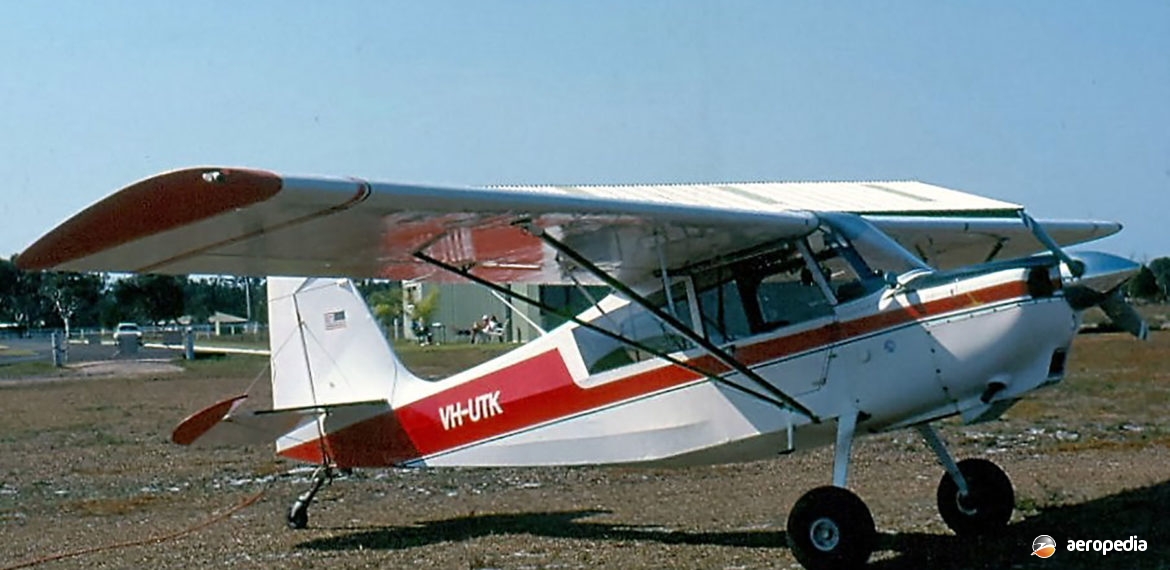Photograph:
Bellanca 8GCBC Scout VH-UTK (c/n 202-76) at Port Macquarie, NSW in August 1993 (David C Eyre)
Country of origin:
United States of America
Description:
Two-seat cabin monoplane
Power Plant:
One 134 kw (180 hp) Avco Lycoming O-360-C2A four-cylinder horizontally-opposed air-cooled engine
Specifications:
- Wingspan: 11.05 m (36 ft 2 in)
- Length: 6.92 m (22 ft 8¾ in)
- Height: 2.64 m (8 ft 8 in)
- Wing area: 16.7 m² (180 sq ft)
- Max speed at sea level: 217 km/h (135 mph)
- Max cruising speed: 202 km/h (126 mph)
- Cruising speed at 75% power: 196 km/h (122 mph)
- Stalling speed flaps down: 81 km/h (50 mph)
- Initial rate of climb: 336 m/min (1,110 ft/min)
- Max rate of climb: 433 m/min (1,420 ft/min)
- Take-off run: 156 m (510 ft)
- Landing run: 128 m (420 ft)
- Range with standard fuel at 75% power: 618 km (384 miles)
- Range at 55% power with optional fuel: 1,444 km (897 miles)
- Empty weight: 597 kg (1,315 lb)
- Loaded weight: 975 kg (2,150 lb)
History:
In 1971 the Bellanca Aircraft Corporation, which produced aircraft such as the Citabria and Decathlon (originally built by the Champion Aircraft Company), added a new model to the range. Known as the Scout, this was intended to be a light utility and general-purpose aircraft, whereas the other two were sport and aerobatic types.
The first production model of the Scout, known as the 7GCBC Scout, had a 112 kw (150 hp) Lycoming O-320-A2B engine. Options included a crop-duster package, long-range fuel tank, and equipment for towing gliders. It was built in two models, the Scout with a fixed-pitch propeller, and the Scout CS with a constant speed propeller. In later years production was by American Champion Aircraft Corporation of Rochester, Wisconsin, this company re-commencing production in 1991.
On 30 April 1974 a new version, the 8GCBC Scout was certificated. Differences included a larger fin, wing flaps and Hoener wingtips extending the span; more rugged undercarriage with balloon tyres for rough ground; and a 134 kw (180 hp) Lycoming engine. This model could be fitted with skis or Edo 2000 floats.
The Scout could also be used in the agricultural role, a Sorensen chemical spray unit with a 341 litres (75 Imp gals) ventral tank being available. The type continued to be produced at a low production rate by American Champion in two models, the 8GCBC Scout, and the 8GCCS with a constant speed propeller, and were similar to earlier production aircraft but for some minor refinements and equipment changes.

